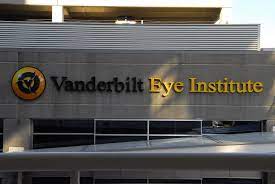Article
Donation bolsters Vanderbilt’s work in retinal vision research
Author(s):
Key Takeaways
- The IRRF's $10 million gift will establish a retinal vision research center at VEI, supporting groundbreaking research in retinal diseases.
- The funding will enable VEI to recruit a physician-scientist leader and support six research teams focused on innovative retinal disease treatments.
According to a Vanderbilt University news release, the International Retinal Research Foundation has extended a $10 million gift to establish a center dedicated to retinal vision research at the Vanderbilt Eye Institute and a directorship to support a physician-scientist leader in the Department of Ophthalmology and Visual Sciences.

The International Retinal Research Foundation (IRRF) has extended a $10 million gift to establish a center dedicated to retinal vision research at the Vanderbilt Eye Institute (VEI) and a directorship to support a physician-scientist leader in the Department of Ophthalmology and Visual Sciences.
According to a Vanderbilt University news release, the donation will drive the groundbreaking science in diseases of the retina and in bringing new treatments to patients with debilitating eye conditions.
Michael Callahan, MD, IRRF Board president, noted that the board and its executive director, Sandra Blackwood, have been honored to work alongside VEI and Paul Sternberg Jr., MD, through the years in a shared mission to advance vision research.
“This support enables us to make a significant difference in the lives of so many people, especially in the Southeast U.S., who are impacted by age-related macular degeneration and diabetic retinopathy,” Callahan said in the news release.
According to the university, the International Retinal Research Foundation Vision Research Center will promote vision research designed to achieve clinical solutions for patients with retinal degenerative and vascular diseases.
The center, according to the release, will be part of VEI, an international leader in vision research and training. With one of the fastest growing ophthalmology and vision research programs in the country, VEI consistently ranks among the top five programs in terms of extramural funding and impactful publications.
“This is truly a transformational gift for our retina research program,” Sternberg, chair of the Department of Ophthalmology and Visual Sciences and director of the Vanderbilt Eye Institute, who has a two-decade history of working with the IRRF and currently serves on their board of directors, said in the news release.
Moreover, Sternberg pointed out that the IRRF has gone from a modest regional group to an organization with an established footprint in the vision research world.
“Along the way, Vanderbilt has grown tremendously as a vision research entity,” he said in the release. “Personally, having worked with the foundation for so long, it is humbling they would choose to support Vanderbilt. It is also very affirming that they believe we are a world-class research program and that we will be able to steward this gift in a meaningful and impactful way.”
The university also noted in its news release that IRRF has long been a leader in supporting retinal research for decades, specializing in support of investigator-initiated research grants. Early and mid-career investigators across the nation, including several at VEI, have received project funding from the foundation at critical points in their careers.
Going forward, the university noted that the IRRF’s directorship at VUMC will also enable a physician-scientist leader to engage in collaborative research and training efforts that ultimately improve patient care.
“This funding will play a crucial role in our fight against debilitating retinal diseases. We are grateful to the IRRF for this generous gift that will enable multiple research teams to seek new treatments and allow the VEI to recruit an outstanding new leader to help advance this work,” Jeff Balser, MD, PhD, president and CEO for Vanderbilt University Medical Center and Dean of Vanderbilt University School of Medicine, said in the university news release.
Investigating potential new treatments for blinding eye disease is at the core of all VEI research, David Calkins, PhD, the Denis M. O’Day Professor of Ophthalmology and Visual Sciences, assistant vice president for VUMC Research, vice chair and director of Research at the Vanderbilt Eye Institute, and director of the Vanderbilt Vision Research Center, said in the university news release. The IRRF gift allows researchers to take groundbreaking research to the next level, he said.
The university also announced that six research teams have been identified to be the first recipients of the IRRF funding:
- Sujoy Bhattacharya, PhD, and Milam Brantley Jr., MD, PhD: “Bile acids activate autophagy to prevent RPE degeneration in atrophic AMD.”
- Sujoy Bhattacharya, PhD, and Ed Chaum, MD, PhD: “A Novel Mouse Model for Atrophic AMD.”
- Avni Finn, MD, MBA: “Developing a Deep Learning Model for the Automated Analysis of Macular Holes.”
- Imam Uddin, PhD, and John Penn, PhD: “Design and synthesis of Lipid-shRNA conjugates for gene silencing in a model of age-related macular degeneration (AMD).”
- Sapna Gangaputra, MD, MPH, Milam Brantley Jr., MD, PhD, and Stephen Kim, MD: “Characterization of ocular microbiome in an established diabetic cohort.”
- Dolly Ann Padovani-Claudio, MD, PhD, and Lauren Wareham, PhD: “Elucidating astrocyte contributions to retinal vascular alterations in CXCR2 KO mice.”
Calkins also noted in the news release that the donation from the IRRF provides an opportunity for VEI collaborators to create innovation in the space of retinal degeneration and vascular disease.
“We are grateful for IRRF’s generosity because the pilot grants allow us to support high-risk, high-payoff science,” Calkins concluded. “Our goal, as always, is to translate discovery into tools that ultimately will help our patients preserve or even regain their vision.”
Newsletter
Don’t miss out—get Ophthalmology Times updates on the latest clinical advancements and expert interviews, straight to your inbox.





